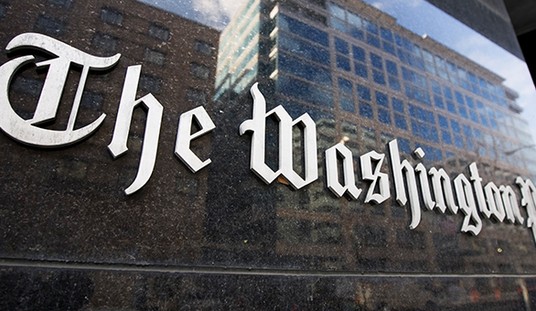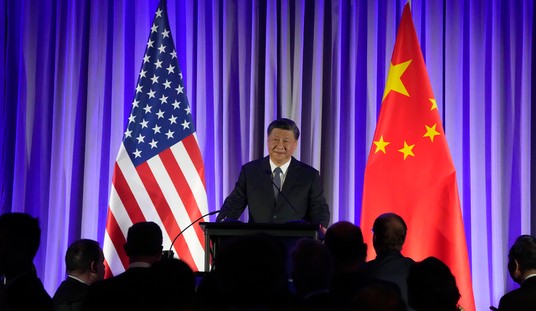 “Some say Google is God,” Sergey Brin once said. “Others say Google is Satan.” The same has often been thought of the United States of America. Bob Woodward claims “the dramatic drop in violence in Iraq is due in large part to a secret program the U.S. military has used to kill terrorists,” a program “which Woodward compares to the World War II era Manhattan Project that developed the atomic bomb.”
“Some say Google is God,” Sergey Brin once said. “Others say Google is Satan.” The same has often been thought of the United States of America. Bob Woodward claims “the dramatic drop in violence in Iraq is due in large part to a secret program the U.S. military has used to kill terrorists,” a program “which Woodward compares to the World War II era Manhattan Project that developed the atomic bomb.”
“It is a wonderful example of American ingenuity solving a problem in war, as we often have,” Woodward said.
In “The War Within: Secret White House History 2006-2008,” Woodward disclosed the existence of secret operational capabilities developed by the military to locate, target and kill leaders of al Qaeda in Iraq and other insurgent leaders.
Woodward has described in his latest book, the War Within, how George Bush spearheaded a makeover of US strategy in Iraq when it was clear that things were not going well. But Woodward argues that other improvements were coming online as well, of which the Surge was only one aspect and therefore the Surge was not entirely central to the victory at all. CNN summarizes Woodward’s argument.
Woodward, associate editor of the Washington Post, wrote that along with the Surge and the new covert tactics, two other factors helped reduce the violence. One was the decision of militant cleric Muqtada al-Sadr to order a cease-fire by his Mehdi Army. The other was the “Anbar Awakening” movement that saw Sunni tribes aligning with U.S. troops to battle al Qaeda in Iraq.
But Max Boot argues that Woodward is putting strategy and tactics on the same level. Better tactical methods alone cannot win a war if strategy is flawed. But a good strategy suddenly makes all the tactical advantages much more effective because they are employed within a winning framework. According to Boot, advances like the Manhattan-style project to take out terrorists were the servants of the Surge, not its drivers. And the Surge itself was an expression of a different way of thinking about winning the war in Iraq. Max Boot asked in his Commentary article why things suddenly became more effective with the Surge. His answer? Because a framework had been established in which it all made sense:
Far be it for me to quarrel with “authoritative sources” or to take anything away from the Joint Special Operations Command which was responsible for for taking down so many bad guys. . . . But ask yourself this question: Why did JSOC’s efforts suddenly become so much more successful starting in the late spring of 2007? Might it possibly be because of the surge, which put large numbers of U.S. troops into neighborhoods where they could provide sufficient security to make more Iraqis willing to come forward and provide invaluable intelligence on Al Qaeda and Special Groups terrorists? The special operators had been working in Iraq since 2003 and it was not until the arrival of more regular troops that violence became to fall dramatically. If we had stuck mainly to a commando-focused campaign-as so many, including the Democratic leadership, wanted to do-the odds of success would have been no greater than they were in 2006, notwithstanding all of the “highly classified techniques” incorporated by JSOC.
The conceptual breakthrough was to realize that winning the information and intelligence war depended on securing the population because that was the greatest source of actionable intelligence. Until that was accomplished, the intelligence war could not be decisively won; and neither American weapons nor military assistance to Iraq could be used to best effect. The decisive battle in the intelligence war was to liberate the human information locked up in the Iraqi population. That could be achieved by persuading the Iraqi population that America would not abandon them; that it would keep them safe. Once this happened then both participation in the Iraqi Army and “tips” were destined to grow exponentially.
William McGurn in the Wall Street Journal makes this exact point about the Surge: “the surge was a shift in mission, not simply an addition of five brigades. Until the surge, we had pursued a political solution, hoping that the answer to Iraq was the rise of a democratic government that would persuade Iraqis to come together for their future. The surge, by contrast, finally recognized the obvious: Until Iraqis started feeling safe in their own homes and neighborhoods, there would be no compromise or rebuilding.”
This is a distinctinctly different approach from the strategies advocated by Biden and Obama to pressure the Iraqi politicians into settling their differences by threatening to withdraw US troops, in the belief that a rapid withdrawal would force all parties to ‘get serious’ about resolving their political problems. Mother Jones described Joe Biden’s “partition” strategy and Barack Obama’s prescription for a simple withdrawal. Both were really extensions of the failed “political solution” taken to the limit; leaving the problem of creating stability in Iraq entirely up to the Iraqis. Those who were critical of Rumsfeld’s bicycle “training wheels” approach to solving the political problems in Iraq should fairly recognize that Biden’s innovation consisted in specifying three bicycles instead of one, while Obama wanted to just push the trainee cyclist down the hill and hope for the best.
In a July 2007 town hall event, Obama said, “[Partition] may end up being the best solution, but here’s the thing. We can’t impose it on the Iraqis. The Iraqis have to make the decision themselves…. If the Iraqi government believes that it can form a unified government they should do that. If they want a soft partition, they should do that. If they want us simply to leave, we can do that too. But they have to make a series of decisions.”
That might have been a reasonable approach if it had any chance of working. But neither partition nor withdrawal would have unleashed the reservoirs of information from a frightened population that alone could reduce the violence in Iraq. My guess is that both Biden’s retrograde movement into partition or Obama’s curiously passive wait-and-see would have kept the population on the fence, unwilling to commit one way or the other to a central government. In both cases Iraq would probably have collapsed into a morass and not even the ‘Manhattan-style’ technology could change that. But the Surge made it possible to release both the informational energy and use it to build political stability. And the results were devastating.
Joby Warrick and Robin Wright of the Washington Post describe the desperate straits of Iraqi insurgents striving to escape from a targeted US strike capability fueled by the intelligence from the Iraqi population. “Abu Uthman, whose fierce attacks against U.S. troops and Iraqi civilians in Fallujah had earned him a top spot on Iraq’s most-wanted list, had been reduced to shuttling between hideouts in a Baghdad slum, hiding by day for fear neighbors might recognize him. In the end, a former associate-turned-informant showed local authorities the house where Uthman was sleeping. On Aug. 11, U.S. troops kicked in the door and handcuffed him.” Uthman was lucky. For others not a knock on the door but a missile bolting down from the blue — the so-called “Hand of Allah” — would be their last experience.
Headquartered in an old concrete hangar on the Balad Air Base, which once housed Saddam Hussein’s fighter aircraft, about 45 miles north of Baghdad, the Joint Task Force in Iraq runs fusion cells in the north, west and south and in Baghdad, U.S. officials said.
The headquarters bustles like the New York Stock Exchange, with long-haired computer experts working alongside wizened intelligence agents and crisply clad military officers, say officials who have worked there or visited. … Huge computer screens hang from the ceiling, displaying aerial surveillance images relayed from Predator, Schweizer and tiny Gnat spycraft.
For the Joint Task Force, the CIA provides intelligence analysts and spycraft with sensors and cameras that can track targets, vehicles or equipment for up to 14 hours. FBI forensic experts dissect data, from cellphone information to the “pocket litter” found on extremists. Treasury officials track funds flowing among extremists and from governments. National Security Agency staffers intercept conversations or computer data, and members of the National Geospatial-Intelligence Agency use high-tech equipment to pinpoint where suspected extremists are using phones or computers. …
Data gathered in a raid at midnight — collected by helmet-mounted cameras that can scan rooms, people, documents and cellphone entries and relay the pictures back to headquarters — often lead to a second or third raid before dawn, according to U.S. officials. … “It’s been the synergy, it’s been the integration that has had such an impact.”
Synergy had a name. And that name was the Surge. It was the combination of protecting intelligence sources, exploiting the information and feeding it back into the system in the form of increased security and more actionable information that was fatal to the Iraqi insurgency. Finding the correct organizational and social expression of strategy is one of hardest challenges of war. All of the technologies available in Iraq are also available to the Afghan/Pakistani theater. But the correct vehicle to combine them has not yet been found. And that challenge — to find an Afghan/Pakistani equivalent of the Surge — is a problem which the US is still trying to solve. The ongoing search for a winning strategy is a testament to the importance of strategy. Not just the sword, but the idea behind the sword, is what counts.
(Hat tip: DL)










Join the conversation as a VIP Member